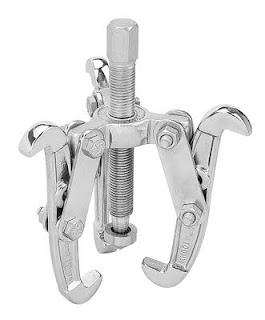Carpentry is a skilled trade that involves shaping, constructing, and repairing wooden structures. To excel in this craft, carpenters rely on a wide range of tools that enable them to bring their creative visions to life. In this blog post, we will delve into the world of carpentry tools, exploring their names, uses, and the importance of having the right tools for different woodworking tasks. Whether you're a professional carpenter or an enthusiastic DIYer, understanding these tools and their uses will enhance your woodworking skills and projects.
- Types of Spanners: Essential Tools for Carpentry Spanners, also known as wrenches, play a vital role in carpentry projects. They are used to tighten or loosen nuts and bolts. Here are a few commonly used types of spanner.
- Adjustable Spanner: With an adjustable jaw, this versatile spanner allows you to work with various sizes of nuts and bolts.
- Combination Spanner: Featuring both open-end and box-end jaws, this spanner offers flexibility and convenience for different tasks.
- Ratchet Spanner: This spanner has a ratcheting mechanism that allows for continuous tightening or loosening without removing the spanner from the fastener.
Having a set of spanners in different sizes ensures you have the right tool for any carpentry job.
- Types of Bench Vice: Securing Your Workpiece A bench vice is a clamping tool that holds the workpiece securely in place during woodworking tasks. Different types of bench vice are available, including:
- Woodworking Vice: Designed specifically for woodworking, this vice typically features wooden jaws to protect delicate workpieces from damage.
- Engineer's Vice: This heavy-duty vice is used for general metalworking tasks and offers a sturdy grip on various materials.
- Quick-Release Vice: Equipped with a quick-release mechanism, this vice allows for rapid adjustment and release of the workpiece.
The choice of bench vice depends on the nature of your woodworking projects and the materials you work with.
- Basic Carpentry Tools and Their Uses: a. Claw Hammer: Used for driving and removing nails, the claw hammer is a versatile tool in carpentry. The flat end is for driving nails, while the curved claw is for removing them.
b. Chisels: Chisels are used for cutting and shaping wood. They come in various sizes and shapes, including beveled-edge chisels, paring chisels, and mortise chisels.
c. Handsaw: Handsaws are essential for cutting wood. Different types of handsaws are available, such as crosscut saws for cutting across the grain and rip saws for cutting along the grain.
d. Screwdrivers: Screwdrivers are used to drive screws into wood. Having a variety of screwdrivers with different head types and sizes ensures you have the right tool for any screw.
e. Measuring Tools: Accurate measurements are crucial in carpentry. Common measuring tools include a tape measure, combination square, and marking gauge.
f. Power Tools: While not exclusive to carpentry, power tools such as circular saws, jigsaws, and drills can significantly enhance efficiency and precision in woodworking projects.
Conclusion: Carpentry is a craft that demands precision, skill, and the right tools. In this blog post, we explored carpentry tools and their uses, including different types of spanner, bench vices, and basic hand tools. Whether you're building furniture, constructing structures, or working on smaller woodworking projects, having a well-equipped toolbox is essential. Invest in quality tools, maintain them properly, and familiarize yourself with their uses to achieve outstanding results in your carpentry endeavors. With the right tools in hand, you'll be well-equipped to tackle any woodworking challenge that comes your way.
